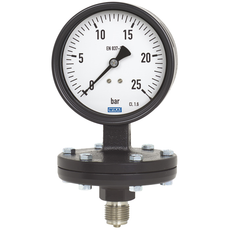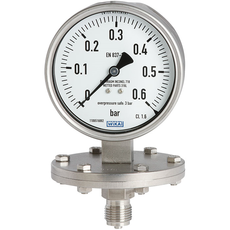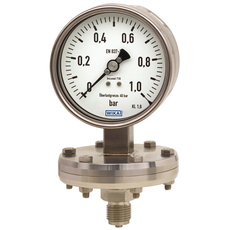Plate springs are thin corrugated circular membranes that are clamped or welded along the edge between two flanges and come into contact with the measured medium on only one side.
The deflection caused by this contact is proportional to the pressure value. The movement is transmitted by a pointer mechanism to the scale. Plate springs have a relatively high permutation force. As a result of the ring-shaped fastening, the leaf springs are less susceptible to shocks than tubular springs, but the error of the readings with temperature changes is greater. Thanks to the support for the membranes is achieved increased resistance to overloads. Coatings or foils applied to the surface of the plate springs provide protection against corrosive media. The wide connecting holes or open connection flanges, as well as the washing possibilities, make the leaf springs particularly suitable for handling high viscosity, contaminated or crystallizing substances. The ranges of readings are between 0 … 16 mbar and 0 … 40 bar with an accuracy class 1.6 and 2.5.
A higher accuracy class is provided by pressure gauges with flat springs in a special version.



